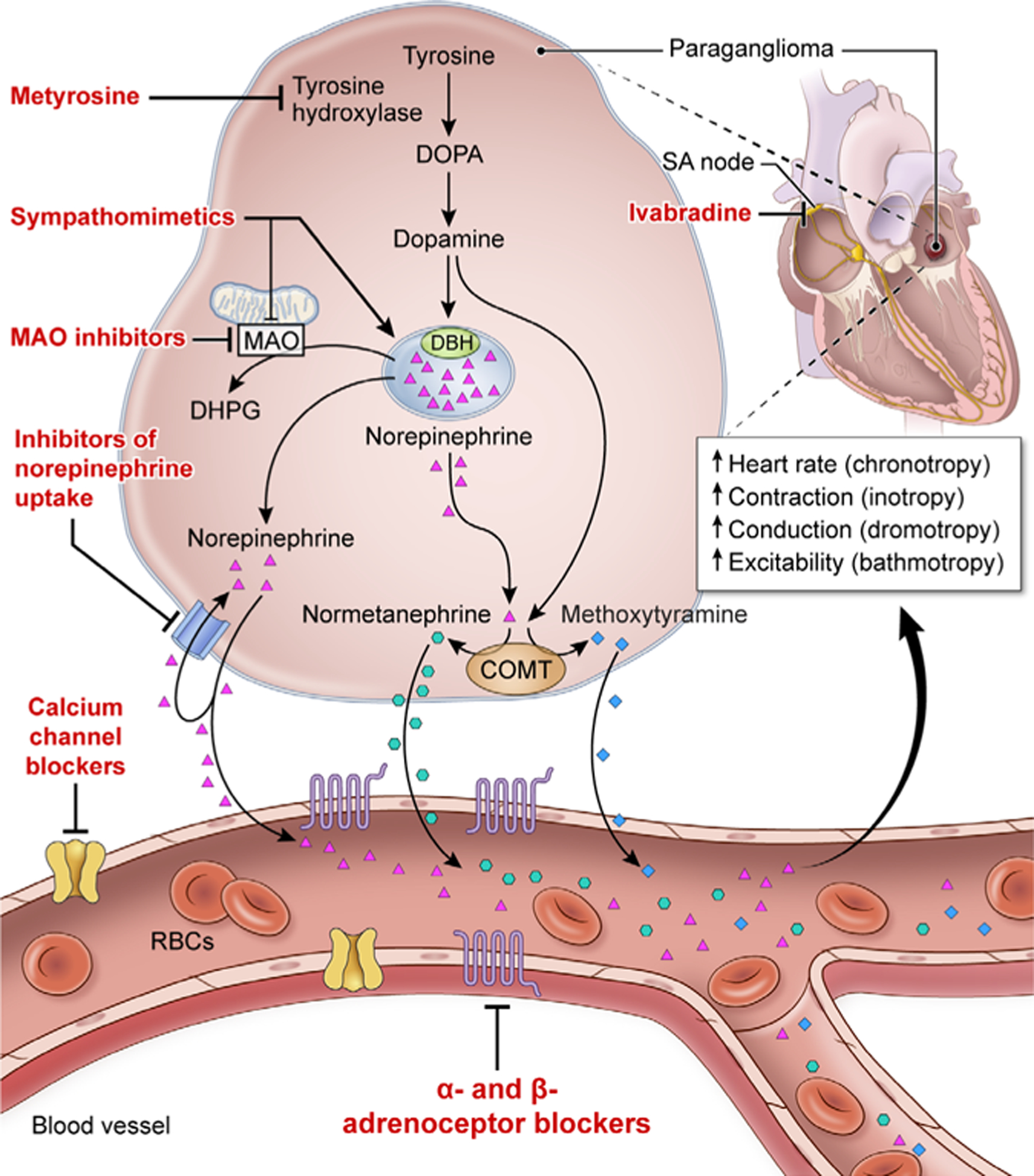Figure 2.

Schematic representation of synthesis, release and action of catecholamines and the respective metabolites released from cardiac paraganglioma and drugs that act on the catecholamine pathway. The α-adrenoceptor and β-adrenoceptor blockers reducethe effects of catecholamines on end organs such as blood vessels, heart and others that harbour adrenoceptors. Metyrosine blocks the rate-limiting step in catecholamine synthesis by inhibiting tyrosine hydroxylase. Calcium channel blockers cause smooth muscle relaxation in the blood vessel. Ivabradine, an If current inhibitor, acts on the sinoatrial node (SA node), thereby targeting the chronotropic effect of catecholamines at SA node. Agents such as sympathomimetic drugs (ephedrine, caffeine, amphetamine and nicotine) cause displacement of norepinephrine from the stores (vesicular sequestration, dominant mechanism indicated by bold arrow) and partly by inhibiting monoamine oxidase (MAO). MAO inhibitors block the conversion of catecholamines to dihydroxyphenylglycol (DHPG), thereby increasing the concentrations of norepinephrine. Antidepressants such as selective-norepinephrine re-uptake inhibitors, and tricyclic antidepressants that inhibit norepinephrine re-uptake leading to increased concentration of norepinephrine. RBC, red blood cell.
